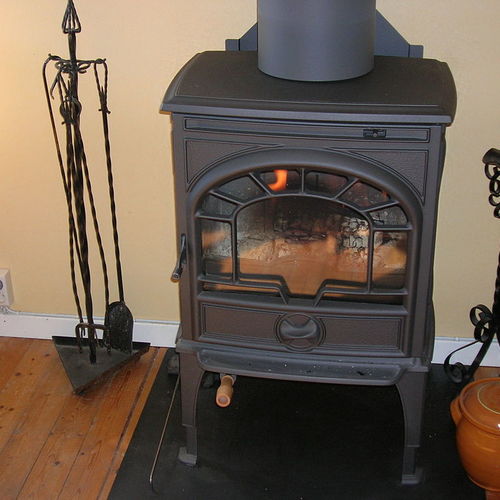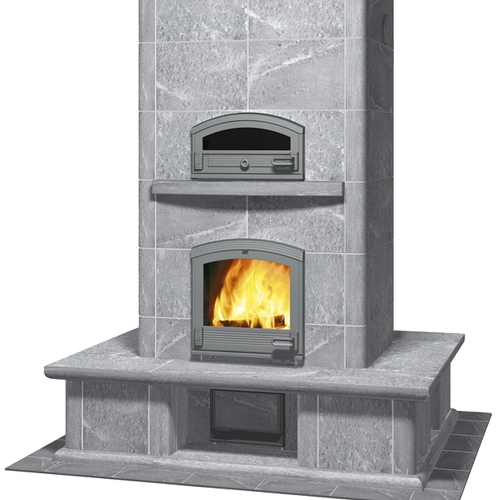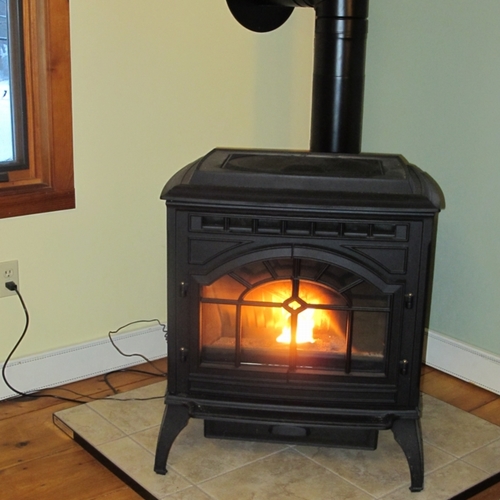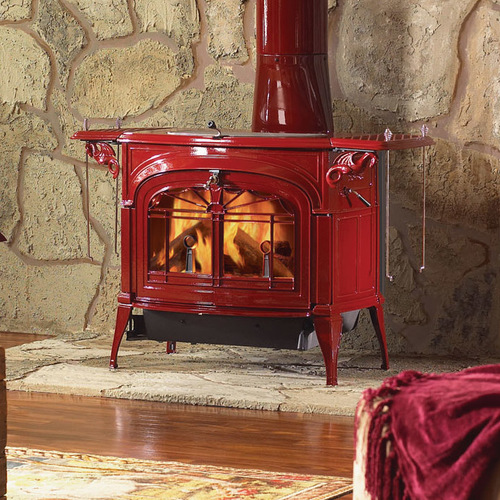
Image Credit: Alex Wilson
I’ve always gotten a lot of questions from friends, neighbors, and casual acquaintances about energy issues, and those questions picked up dramatically when I started writing this column two-and-a-half years ago. Beginning with this week, I’m going to devote an occasional column to answering some of these questions. (Feel free to e-mail questions to me, mentioning Energy Solutions in the subject line: [email protected].)
What’s the greenest option for heating my home?
This is actually a surprisingly complex question. My first answer is that the greenest heating option is that which uses the least. In other words, reduce the amount of heating that’s required by carrying out energy conservation improvements. Less is better no matter what the type of heat. I tend to include passive solar features with energy conservation — by introducing solar heat through south-facing windows, we reduce the need for other heat sources.
But that answer is a bit of a cop-out. In our climate (cold!), we almost always need to provide supplemental heat to keep our houses comfortable. That’s especially the case during very cold weather, which we’re experiencing this week. Nighttime temperatures have dropped well into the minus-double-digits (Fahrenheit) in Vermont over the past week.
Electric heat?
With an extremely energy-efficient house (R-40 or more in the walls, triple-glazed windows with two low-e coatings, and very tight construction), electric heat can be the greenest option. Electricity? Yes, electricity…but only if the heating loads are very small. With a very low heating load, it’s possible to generate the electricity needed using photovoltaic (solar electric) modules either mounted on the roof or ground-mounted.
If I were building a new house today, it would be superinsulated and heated with a high-efficiency, minisplit, air-source heat pump that I could power with electricity generated on the roof. Even if I couldn’t afford the PV panels right away, I might opt for electric heat anyway to avoid the need for combustion in the house (an indoor air quality and safety concern) and to enable easy conversion to solar-generated heat down-the-road.
Wood pellet heating systems
From an environmental standpoint, avoiding fossil fuels is a great goal. If we can’t heat with solar electricity (or if our heating loads are too large to make that practical — which will be the case with most existing homes), then I’d recommend wood pellets.
Wood pellets are clean-burning and renewable. Yes, they emit carbon dioxide (a greenhouse gas that causes climate change), but trees sequester carbon dioxide out of the air as they grow — converting it into above- and below-ground biomass. So, as long as trees are grown sustainably — meaning that trees are harvested only as quickly as replacement trees are grown — wood pellets (and cordwood) are “carbon-neutral.”
A downside to heating with wood pellets is that electric blowers are used. One of these blowers introduces air into the combustion chamber and another delivers warm air to the room. The result of fan-assisted air supply is very clean combustion — emitting significantly less air pollution than wood stoves that burn cordwood. But those blowers are noisy and we should consider how that electricity is made. Solar electricity is great; coal-generated electricity isn’t.
For central heating, a pellet boiler should be considered. Burning pellets heats water that is circulated through baseboard radiators just like oil- and gas-fired hydronic heating systems. Be aware that advanced pellet boilers (most of which are made in Europe) are expensive. With a pellet boiler, pellets can be bought in bulk, avoiding the plastic bags that most wood pellets are sold in. One of the biggest frustrations I have with my pellet stove is the large number of plastic bags that accumulate.
If central heating is not required, a pellet stove makes a good heating option. Pellet stoves, though, require filling by hand, while most pellet boilers are more automated. This limits the practicality of pellet stoves for homeowners who are away for more than a couple days at a time during the winter. Be aware that pellet stoves are noisy (from the fans) and they deliver their heat by forced convection rather than radiation. It just isn’t as pleasant to sit in front of a pellet stove as it is in front of a wood stove (where I am as I write this).
In rural areas and for homeowners with their own woodlots, wood stoves are an okay option, as long as a modern, relatively clean-burning woodstove is used. Use only dry wood to minimize pollution from wood burning.
Next week, we’ll dig into heating options a little deeper, covering systems that use natural gas, propane, and fuel oil.
In addition to this Energy Solutions blog, Alex contributes to the weekly blog BuildingGreen’s Product of the Week, which profiles an interesting new green building product each week.
Alex is founder of BuildingGreen, Inc. and executive editor of Environmental Building News, which is now in its 20th year. To keep up with his latest articles and musings, you can sign up for his Twitter feed.
Weekly Newsletter
Get building science and energy efficiency advice, plus special offers, in your inbox.















16 Comments
I'm not so sure about the "green"ness of pellets...
I might go so far as to say that - in the above situation - woodstoves are better than okay. I'm not sure there is a more "green" form of heating energy than cordwood that has been sustainably harvested from your own back yard then burned in a high-efficiency appliance. Obviously, this is not an option for many people.
Wood pellets are convenient and put waste materials to a good use - but it also takes energy to process, manufacture and deliver those pellets.
Wood pellet manufacturing only makes sense to me if it diverts a waste stream - in this case waste wood fibre. Cutting living trees so they can be chipped and pressed into pellets before being driven across the country is akin to making oil from bitumen. The EROEI takes a nose-dive.
The EROEI relationship between cordwood and fuel pellets is easy to experience first hand (making pellets at home saves on transportation energy too):
Cordwood:
Cut and split enough cordwood to keep you warm all winter.
Fuel pellets:
Chip all your cordwood (gas or diesel wood chipper required).
Process the wood chips with a hammer-mill (electricity and time required).
Feed the pulverized wood-fibre into a pellet press (more electricity and time required).
As an aside, if I had the resources I would use waste wood fibre to make pressed wood panels for the building industry. Something similar to Pavatex. I think that waste wood fibre would probably serve us all better as insulation than as manufactured fuel.
EROI of wood pellets
Does anyone have good figures on energy ROI of burning wood pellets for heat? Would be interesting to compare against cordwood for heat, and against wood chips for combined heat and power (CHP).
Not much out there for EROEI data.
EROEI for wood pellets: 12:1
EROEI for cordwood ranges from 14:1 (comercially harvested and processed or softwoods) to 40:1 (hardwoods harvested on site).
http://pelletheat.org/pellets/benefits-of-pellets/
http://www.energybulletin.net/51402 (the link to the original document in this article is broken)
As I said before, I think there is value in wood pellet fuels where production diverts a waste stream. If demand is such that living trees have to be cut for making pellets, then I'm not sure there is any advantage to heating with pellets.
Pellets are cool with me... well... warm actually
No subsidy on pellets. They are worth their cost and save money verses Oil
I am all for pellets.
I am all for firewood too, but as has been discussed, it only is an option in limited places for limited numbers of participants.
In the end, we need to be as solar as we all can become and totally non polluting.
if i switch from oil, can i heat water w/ pellets?
want to get rid of my old boiler, but if i replace it with a pellet burner, will need to move to electric water heat, right?
Response to Dave Mamsey
Dave,
You can install an indirect water heater -- basically an insulated tank with a heat-exchange coil inside, hooked up to a circulator controlled by an aquastat -- on virtually any boiler, whether the boiler is fueled by oil or wood pellets.
What about Bio Bricks, et al?
Alex,
I'm curious if you feel the same way about the pressed "bricks" of wood being used in many traditional, high efficiency woodstoves. One example is Bio Bricks (http://biopellet.net/), though there are many companies making similar. The reason I ask is that the same perks of using waste wood seem to apply, and there is no need for an electric blower, so the stove can work even when the power is out. Thoughts?
PV electric heating?
"If I were building a new house today, it would be superinsulated and heated with a high-efficiency, mini-split, air-source heat pump that I could power with electricity generated on the roof."
I think we're going to see a lot of these new high-efficiency mini-splits in super-insulated homes going forward, but just wanted to point out that would still be some seriously heavy lifting for any less than a pretty massive PV assembly, especially on those grey days of winter. Hope you stay grid-connected!
burning wood
There is some controversy in the UK about whether biomass (especially from trees) is truly a carbon-neutral fuel. It has become a political issue because the government is heavily promoting biomass. From the Institute for Science in Society:
http://www.i-sis.org.uk/zeroCarbonBritainOrDustBowlBritain.php
James, grid connected solar it is.
And I would love to see us race to beat Germany to over 100% solar per community. Then the excess E used to go all electric in transportation and eventually industry. Even the airlines will be fueled from the sun via hydrogen.
A clean solar now, is just about here. Yes!
Air quality concerns with pellet stoves?
Hi Alex
Have you looked much into air pollutants from pellet stoves? I understand there are more particulates than burning natural gas. But I'd be curious about your thoughts on that. I heat (mostly) with a pellet stove for the reasons you outlined, but I've been getting more concerned about local air quality.
Air quality concerns with pellet stoves
Martin,
Yes, pellet stoves do emit more pollution than equipment using natural gas or propane--but a whole lot less pollution than wood stoves. If the trees from which the pellets are made are grown sustainably, then the pellets should have no net contribution to global warming. No matter what the heating fuel, the solution we all need to collectively work toward is to use a whole lot less.
pellets
What are your thouths on a pellet gun to replace the oil burner .
Replacing oil burner with pellet burner
I would be extremely leery of this option. Your oil-fired boiler or furnace is optimized for burning oil; it's hard to imagine that a pellet burner would work--especially the ash management aspect of it. If you're thinking of one of these, try to talk to some people who have used them for a few years. Good luck!
Pellet vs Fossil Fuel
I would argue that pellet is significantly more green than any fossil fuel option. Pellet CO2 comes from trees and goes back to trees - hence neutral (sans the manufacturing and delivery). Fossil fuels take the trapped C02 in the earth and release it - and they also have manufacturing and delivery requirements. Fossil adds to the atmospheric load, wood doesn't (conservation of mass).
The negative item on pellets is the plastic bags. We use them for garbage and other utility sacks - so we get a second use.
On a personal note, we have a house with a four-fold energy strategy (location is temperate-wet western Oregon - 46 deg north)
1. Passive solar - house is 2:1 ratio footprint, oriented along the east-west line, with a large portion glazed to the south.
2. Daylight basement with the north-side built into a hill. Ground temp is 65 deg F - this is our cooling mechanism in the summer. All we have to do is move the air in the house to get all areas in the low 70's. This also aids in the net heat required for comfort in the winter.
3. High-Eff air-source heat pump.
4. Wood Pellet as second-stage heat.
I would love to have a full net-zero house, but we aren' t there at this time. Solar panels on the roof will help mitigate it - planning on the that in a year or so, budget permitting.
Wood Pellets
Another case for pellets
Every ton of wood sent to the landfill produces 60 pounds of greenhouse gases. In the US annually we bury 33 million tons of construction and demolition debris. The decomposition of this wood releases 5 million tons of carbon (in the form of methane gas), equivalent to the annual emissions of 3,736,000 passenger cars.
Reusing these wood wastes by converting them into pellets doesn't eliminate their pollution, but this waste product does serve an additional purpose before expelling carbon by heating our homes and offsetting the use of other fuels such as oil, natural gas and coal.
Log in or create an account to post a comment.
Sign up Log in